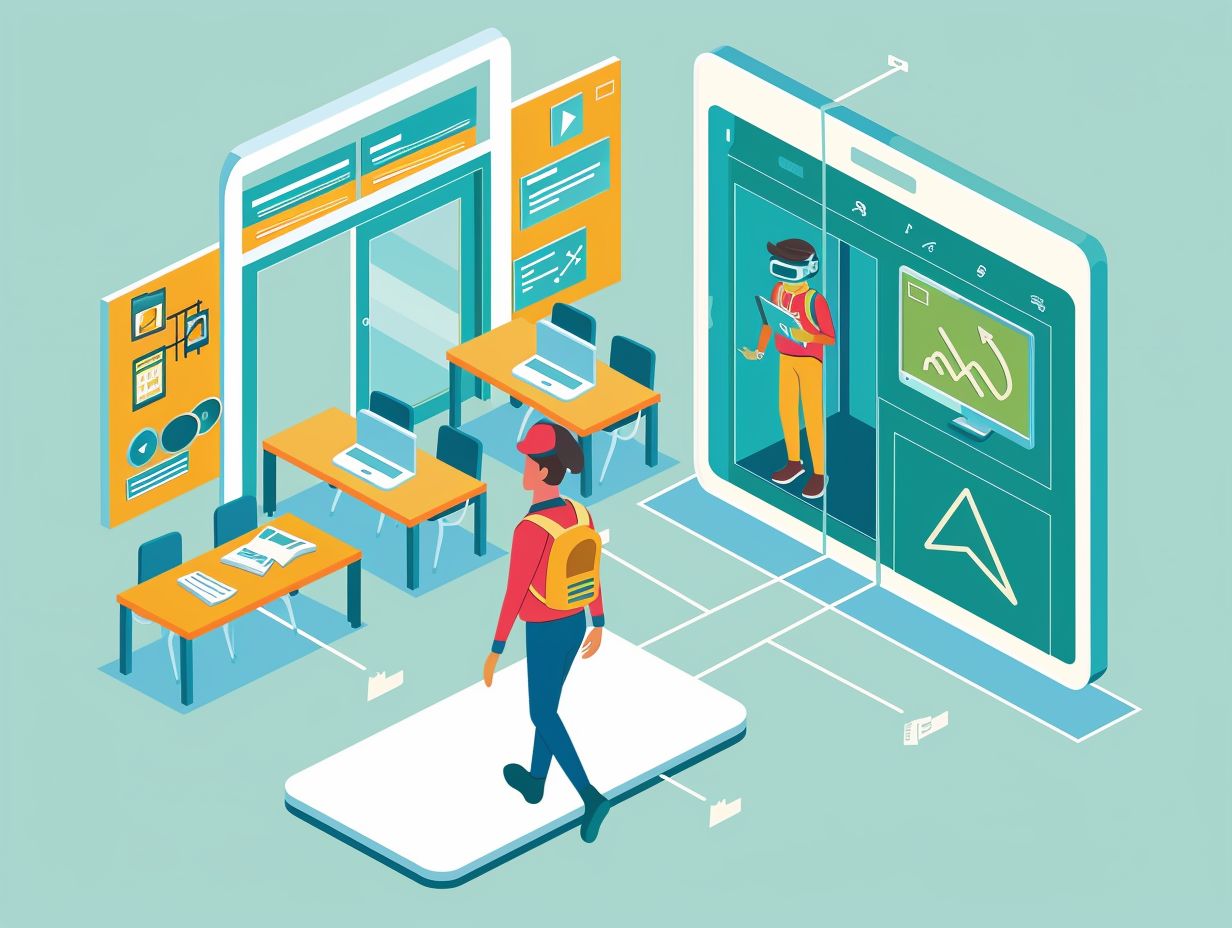Today businesses are recognizing the growing necessity for online technical training. You are about to delve into an analysis of the pros and cons of traditional training approaches and the advantages of shifting towards online platforms for enhancing technical competencies. By learning how to evaluate training requirements, choose appropriate online platforms, develop impactful training schemes, and smoothly execute the transition, you can ensure a successful move towards online training. Uncover methods for assessing the effectiveness of online technical training and guaranteeing ongoing enhancement as organizations make the critical transition from traditional to online training in this digital age.
Key Takeaways:

- Embrace the benefits of online technical training, such as flexibility and cost-effectiveness, while acknowledging the drawbacks of traditional methods.
- Prepare for the transition by carefully assessing training needs and choosing the most suitable online platforms.
- Design a successful online technical training program by incorporating key elements and ensuring engagement and retention among learners.
The Need for Online Technical Training
In today’s evolving technological landscape, the need for online technical training is more crucial than ever. As traditional classroom methods prove to be insufficient in catering to the demands of the digital era, organizations are increasingly turning towards online learning platforms to equip their workforce with the necessary skills. The shift towards online technical training offers numerous advantages over traditional methods. Online learning provides you, as a learner, with the flexibility to access materials at your convenience, enabling you to balance work and education seamlessly. Online platforms often offer interactive simulations and real-world scenarios, enhancing practical skill development. By utilizing online resources, companies can efficiently upskill their employees and stay ahead in the competitive digital market. The accessibility and scalability of online training make it a cost-effective and time-efficient solution for both individuals and organizations looking to stay current in the tech industry.
Advantages and Disadvantages of Traditional Training
In the domain of educational and corporate learning initiatives, traditional training methods have played a fundamental role. However, with the rapid pace of technological advancements, these methodologies are facing hurdles in meeting the ever-changing requirements of learners. With the contemporary learner’s inclination towards digital learning platforms on the rise, the limitations of traditional training models are becoming increasingly apparent. While traditional training offers benefits like face-to-face interaction and hands-on learning experiences, it can be challenging to reach learners who are geographically dispersed or working remotely. The demand for personalized and on-demand learning experiences is steering the shift towards digital training strategies that provide flexibility and accessibility. Meeting the demands of the digital era entails a fusion of traditional and modern training techniques to accommodate the diverse learning styles and preferences of today’s learners.
Benefits of Online Training for Technical Skills
Online training for technical skills offers you a plethora of benefits that specifically address the technological challenges often encountered in traditional educational settings. The capability of seamless content updates and robust privacy and security features on online platforms creates an environment conducive to effective learning. The flexibility inherent in online training enables you to tailor your learning pace and access resources at your convenience. This adaptability is designed to accommodate various learning styles and schedules, ultimately enhancing engagement and promoting better retention of knowledge. Through the implementation of rigorous privacy protection measures, sensitive data is kept secure, thereby instilling confidence in participants. Moreover, stringent security protocols are in place to protect against cyber threats, ensuring a safe online space where you can concentrate on skill development and expanding your knowledge base.
Preparing for the Transition
As you prepare for the transition from traditional classroom training to online technical learning, several key considerations need to be addressed. These include factors such as budgetary constraints, effective methods for transitioning, and the expected benefits that will result from the change. One of the initial steps to take in this process is to conduct a comprehensive analysis of your current budget. This analysis will help you gain a deep understanding of your financial limitations and allow you to allocate resources in a strategic manner. It is essential to identify cost-effective online platforms and tools that align closely with your organization’s training requirements, ensuring that you maximize the utility of your budget. Training your trainers and staff on the use of these digital tools is crucial for a smooth transition to online technical training. By providing adequate training, you can ensure that everyone involved is equipped with the skills necessary to utilize these tools effectively. Embracing online technical training offers several benefits to organizations, including increased scalability, the flexibility to facilitate remote learning, and enhanced engagement through interactive multimedia content. By making this transition, your organization can experience improved training outcomes and a more efficient learning process.
Assessing Technical Training Needs
 Before you embark on your online technical training journey, it is essential for your organization to conduct a comprehensive assessment of your technical training needs. This evaluation should encompass the educational background of your learners, specific training requirements, and desired learning outcomes. Considering the educational prerequisites of your learners is crucial in designing effective online technical training programs. Understanding their current skill levels, knowledge gaps, and preferred learning styles will help tailor the content to meet their individual needs. Defining clear training specifications, such as the level of interactivity, multimedia elements, and assessment methods, is necessary for engaging and impactful online learning experiences. Aligning the training content with the requirements and expectations of your learners ensures relevance and applicability, leading to higher engagement and retention of knowledge.
Before you embark on your online technical training journey, it is essential for your organization to conduct a comprehensive assessment of your technical training needs. This evaluation should encompass the educational background of your learners, specific training requirements, and desired learning outcomes. Considering the educational prerequisites of your learners is crucial in designing effective online technical training programs. Understanding their current skill levels, knowledge gaps, and preferred learning styles will help tailor the content to meet their individual needs. Defining clear training specifications, such as the level of interactivity, multimedia elements, and assessment methods, is necessary for engaging and impactful online learning experiences. Aligning the training content with the requirements and expectations of your learners ensures relevance and applicability, leading to higher engagement and retention of knowledge.
Identifying Suitable Online Platforms
When looking for suitable online platforms for technical training, your considerations must extend beyond basic functionalities. Platforms that offer innovative features such as microlearning modules, augmented reality simulations, and virtual reality experiences can significantly enhance the learning experience. Microlearning, for instance, breaks down complex concepts into bite-sized lessons, aiding in better retention and understanding. Augmented reality brings a layer of interactivity by overlaying digital information onto the real world, making learning more immersive. On the other hand, virtual reality creates simulated environments that allow learners to practice real-life scenarios in a risk-free setting. When choosing an online training platform, evaluating the integration of these advanced learning tools can make a marked difference in the effectiveness and engagement levels of the training programs.
Designing an Effective Online Technical Training Program
The design of an effective online technical training program depends on incorporating elements that promote adaptive learning, gamification strategies, and project-based learning approaches. By integrating these elements, you can create engaging and impactful training experiences. Adaptive learning involves personalizing the training content to the specific needs and learning pace of each individual, catering to their strengths and areas for improvement. Gamification elements, such as leaderboards, badges, and interactive quizzes, add an element of fun and competition to the learning process, increasing engagement and motivation. Project-based learning methodologies allow learners to apply their knowledge in real-world scenarios, fostering practical skills and problem-solving abilities. This holistic approach to online technical training ensures that learners receive a comprehensive and immersive learning experience.
Key Elements of a Successful Program
Successful online technical training programs are characterized by the seamless integration of eLearning platforms, interactive HTML5 content, engaging PowerPoint slides, educational videos, and high levels of interactivity. These elements collectively contribute to a dynamic and effective learning environment. For instance, eLearning tools offer you flexibility in pacing your studies and accessing materials at your convenience, making the learning process more personalized. Incorporating multimedia resources such as videos and PowerPoint slides enhances your visual and auditory learning experiences. The interactive features within the training program, such as quizzes, simulations, and discussion forums, promote your active engagement and knowledge retention. By leveraging these resources and technologies, online technical training programs can cater to diverse learning styles and create a stimulating educational experience for you as a participant.
Ensuring Engagement and Retention
To ensure high levels of learner engagement and knowledge retention in online technical training programs, it is vital to foster social collaboration among participants. Encouraging interaction, discussion, and knowledge sharing can significantly enhance the learning outcomes. Allowing learners to engage in group projects or collaborative activities boosts not only their understanding of the technical content but also strengthens their teamwork and communication skills. Incorporating interactive elements, such as quizzes, polls, and virtual simulations, keeps participants actively involved in the learning process. Creating a participative learning environment where learners feel comfortable asking questions and seeking clarification fosters a sense of community and support, thereby solidifying their retention of complex technical concepts.
Implementing the Transition
 During the implementation phase of transitioning to online technical training, you must adopt a strategic approach to effectively address challenges and overcome resistance. By proactively identifying potential obstacles and points of resistance, organizations can navigate the transition smoothly. This process entails developing a comprehensive communication plan that highlights the advantages of online training. It is crucial to provide clear guidance and support for employees who may feel hesitant or unfamiliar with the digital learning environment. Encouraging active participation and feedback from stakeholders can help cultivate buy-in and establish a sense of ownership in the transition process. Utilizing technology tools and resources to streamline training delivery and monitor progress is vital for ensuring a seamless shift to online platforms. Regular assessments and adjustments based on feedback will facilitate continuous improvement and optimization of the online training experience.
During the implementation phase of transitioning to online technical training, you must adopt a strategic approach to effectively address challenges and overcome resistance. By proactively identifying potential obstacles and points of resistance, organizations can navigate the transition smoothly. This process entails developing a comprehensive communication plan that highlights the advantages of online training. It is crucial to provide clear guidance and support for employees who may feel hesitant or unfamiliar with the digital learning environment. Encouraging active participation and feedback from stakeholders can help cultivate buy-in and establish a sense of ownership in the transition process. Utilizing technology tools and resources to streamline training delivery and monitor progress is vital for ensuring a seamless shift to online platforms. Regular assessments and adjustments based on feedback will facilitate continuous improvement and optimization of the online training experience.
Strategies for Smooth Implementation
The successful implementation of the transition to online technical training hinges on meticulous planning and the execution of tailored strategies. Education and training play a pivotal role in preparing stakeholders for the change and ensuring a successful transition. Fostering a culture of continuous learning is essential to keep pace with technological advancements. Customized strategies should be designed to cater to different learning styles and proficiency levels. Engaging with subject matter experts can provide valuable insights for developing relevant training content. Regular assessments and feedback mechanisms help in gauging the effectiveness of the training programs and making necessary adjustments. Flexibility in scheduling and delivery modes can accommodate diverse learner needs and maximize engagement. By prioritizing education and training initiatives, organizations can lay a solid foundation for a seamless shift to online technical training.
Addressing Challenges and Resistance
Addressing challenges and resistance during the transition to online technical training requires a deep understanding of learner requirements and preferences. Tailoring solutions to align with the needs of the target audience can help organizations mitigate obstacles and facilitate acceptance. Acknowledging the diverse learning styles and technological competencies of participants is fundamental to successfully adapting to online training. Customizing content delivery methods, interactive tools, and support systems based on individual learning preferences can enhance engagement and comprehension. Creating a culture that emphasizes the value and benefits of online learning can assist in overcoming skepticism and resistance. Encouraging active participation, providing clear communication channels, and offering continuous support are essential elements in navigating the challenges of transitioning to online technical training.
Evaluating the Success of Online Technical Training
When evaluating the success of online technical training programs, you need to measure learning outcomes, identify areas for improvement, and adapt strategies to enhance effectiveness. Conducting thorough evaluations is crucial for organizations to refine their training programs and achieve optimal results. The evaluation process is essential for assessing the effectiveness of training modules and determining the level of knowledge retention among learners. Continuous improvement is key to ensuring that the content remains relevant and aligns with industry standards. Feedback from participants is a valuable component of this process, offering insights into what is effective and where improvements are needed. Adapting training strategies based on this feedback helps to maintain engaging and impactful programs, ultimately leading to improved learning outcomes.
Measuring Learning Outcomes
When measuring learning outcomes in the context of online technical training, you need to assess the impact of technological transformations on training effectiveness and address challenges that may hinder the achievement of desired learning goals. Technological advancements have significantly transformed the delivery and evaluation of online technical training. Utilizing tools like learning management systems, virtual simulations, and data analytics, trainers can monitor and analyze learner progress in real-time. This not only offers insights into individual performance but also enables the customization of learning paths to align with training objectives. Despite these advantages, challenges such as ensuring data accuracy, sustaining learner engagement, and adapting to rapidly evolving technologies must be overcome to maximize the effectiveness of measuring learning outcomes in online technical training.
Continued Improvement and Adaptation
 Continuous improvement and adaptation are essential pillars of successful online technical training initiatives. By regularly updating content to align with industry standards, enhancing privacy measures, and reinforcing security protocols, you can ensure the relevance and effectiveness of your training programs. This continual process of enhancement not only keeps your training materials current but also demonstrates your organization’s dedication to delivering high-quality learning experiences. Regular content updates enable your learners to stay informed about the latest trends and advancements in the field, ensuring that your training remains valuable and engaging. By prioritizing privacy enhancements and security reinforcement, you protect sensitive data and build trust with participants, creating a secure online learning environment that facilitates effective knowledge acquisition and retention.
Continuous improvement and adaptation are essential pillars of successful online technical training initiatives. By regularly updating content to align with industry standards, enhancing privacy measures, and reinforcing security protocols, you can ensure the relevance and effectiveness of your training programs. This continual process of enhancement not only keeps your training materials current but also demonstrates your organization’s dedication to delivering high-quality learning experiences. Regular content updates enable your learners to stay informed about the latest trends and advancements in the field, ensuring that your training remains valuable and engaging. By prioritizing privacy enhancements and security reinforcement, you protect sensitive data and build trust with participants, creating a secure online learning environment that facilitates effective knowledge acquisition and retention.
Frequently Asked Questions
What is the difference between traditional and online technical training?
Traditional technical training involves in-person instruction in a classroom setting, while online technical training is conducted remotely through the internet.
Why should I consider transitioning from traditional to online technical training?
Online technical training offers greater flexibility and convenience, as you can access the material from anywhere with an internet connection. It also allows for self-paced learning and can be less expensive than traditional training.
How do I know if online technical training is right for me?
If you are comfortable with technology and have a strong self-motivation and time management skills, online technical training may be a good fit for you. It is also beneficial for individuals with busy schedules or those who prefer to learn at their own pace.
What are some challenges I may face when transitioning to online technical training?
Some common challenges include feeling isolated without face-to-face interaction with instructors and classmates, technical difficulties, and staying motivated without a set schedule. However, these challenges can be overcome with proper preparation and support.
Will my certification be recognized if I complete online technical training?
Yes, as long as the online training is provided by a reputable and accredited institution, your certification will hold the same value as one obtained through traditional training. It is important to do your research and ensure the program meets industry standards.
Can I still receive hands-on experience with online technical training?
While online training may not provide the same level of hands-on experience as traditional training, many programs offer virtual labs and simulations to supplement the material. Some programs also offer in-person workshops or internships for practical application of skills.
